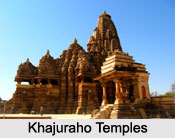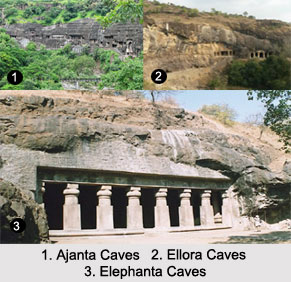 The central part of India hallmarks the relics of ancient India. Central India is absolutely predominated by the states of Madhya Pradesh and Chhattisgarh. While Madhya Pradesh was divided into a separate state in the early years of 21st century, Chhattisgarh is not devoid of Madhya Pradesh`s charming and breathtaking natural surrounds.
The central part of India hallmarks the relics of ancient India. Central India is absolutely predominated by the states of Madhya Pradesh and Chhattisgarh. While Madhya Pradesh was divided into a separate state in the early years of 21st century, Chhattisgarh is not devoid of Madhya Pradesh`s charming and breathtaking natural surrounds.
Different World Heritage Monuments of Central India
Central India, with its mystical calling of the wild, the gargantuan epic muted edifices trying to emote a sense of their own, the coifed architectures of stone and rock varying at each corner, makes a perfect world heritage monument site, which makes visitors turn admirers to return back again and again. Following are the World Heritage Monuments in Central India which are world famous:
Khajuraho Group of Monuments: Khajurao is a significant UNESCO World Heritage place in India. Khajuraho is exceptional heritage site which is celebrated for a collection of Hindu and Jain Temples situated 175 km south east of Jhansi. They are well acknowledged for their Nagara style of representation and erotic figures and sculptures.
 Buddhist Monuments at Sanchi: The Buddhist Monuments situated at Sanchi in Madhya Pradesh are a World Heritage Site in India which is the oldest stone structures in India. Its centre was a semi-circular brick construction built over the remnants of Buddha and was crowned by the Chatra which represents position.
Buddhist Monuments at Sanchi: The Buddhist Monuments situated at Sanchi in Madhya Pradesh are a World Heritage Site in India which is the oldest stone structures in India. Its centre was a semi-circular brick construction built over the remnants of Buddha and was crowned by the Chatra which represents position.
Rock Shelters of Bhimbetka: The Rock Shelters of Bhimbetka is the place where the initial traces of human life on Indian subcontinent were discovered. They"re situated at the foothills of the Vindhaya Mountains in the Deccan Plateau and are an archaeological site for the Mesolithic period and thus indicate the commencement of the South Asian Stone Age.
Ajanta Caves: The Ajanta caves dated back to about 2nd century BCE to 650 CE and consist of the best masterpieces of 31 rock cut Buddhist cave monuments, paintings and sculpture. The caves were extremely built in two different phases.
Ellora Caves: There are about 34 rock cut temples and caves which can be dated to about 600 to 1000 AD, are important in terms of considerate the lives of the people living in these times. The Ellora Caves are a significant UNESCO World Heritage site and an archaeological site, ranging 29 kilometres northwest of the city of Aurangabad. The Ellora Caves are famous for their Indian-rock cut architecture.
Elephanta Caves: These caves are well-known for their rock-cut sculptures and carvings depicting Shiva as the Creator and the Destroyer of the Universe. The chain of sculpted caves located on Elephanta Island is also recognized as Gharapuri. There are many archaeological remains which recommend a quick look into the rich cultural past of Indian civilization.
Chhatrapati Shivaji Terminus: It was built by Frederick William Stevens with the motivation from Victorian Italianate Gothic Revival architecture and established Mughal buildings between the years 1878-1888. Chattrapati Shivaji Terminus, previously known as the Victoria Terminus is the headquarters of Central Railway in Mumbai.



















